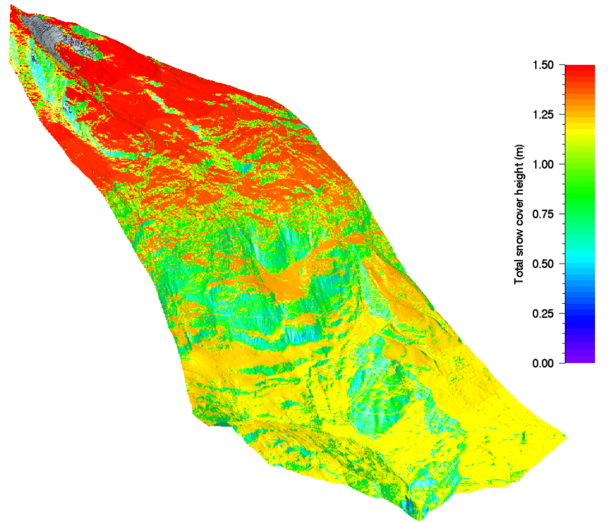Avalanche interaction with the snowcover is physically treated as an elastic-plastic collision in which snow can be entrained (plastic collision) or propelled forward to create splashing-type avalanche pre-fronts (elastic collision). The parameters governing the entrainment process in RAMMS::EXT partition the eroded mass into entrained and splashed parts. Each collisional interaction is associated with specific energy dissipation. The energy required for entrainment and splashing therefore reduces (at first) the speed of the avalanche core (Fig. 1). The particles in the splashing front are provided with enough energy that they are moving at speeds greater than the avalanche front.

Entrainment not only influences the overall mass balance of the avalanche, but also modifies the thermal and mechanical energy fluxes within the avalanche core, resulting in enhanced runout, or flow regime transitions, including the formation of strong powder avalanches. The snow entrained by the avalanche has some temperature. The entrainment of warm snow enhances the temperature rise caused by frictional work. As configurational changes are made a function of temperature, this can lead to the immediate formation of wet, plug-like flow regimes. Entrainment of dry, cold snow, enhances the production of random kinetic energy, and therefore dispersive flow regimes and the formation of powder avalanches. Presently, we have made the erodibility of the snowcover in RAMMS::EXT a function of snow temperature (cold dry snow is easier to erode than warm, moist snow). The model includes a built-in snow distribution algorithm that can be used to generate snow heights (and temperatures) in complex mountain terrain. This simplifies the specification of entrainment conditions. However, an important parameter that must be defined by the user are the elevation gradients (per 100m change in elevation) in snowcover height (Fig. 2) and temperature. This will vary in different climatic regions.
